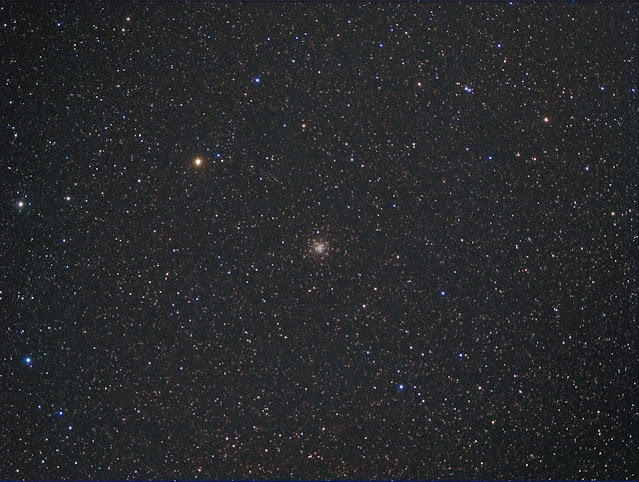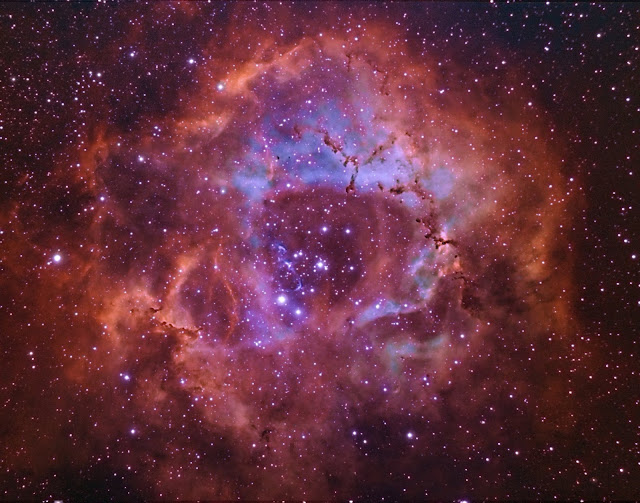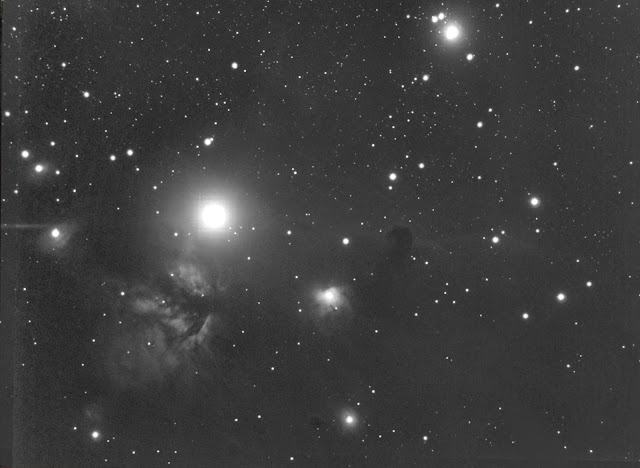NGC7293. the Helix nebula . This image of the Helix nebula contains extra data, a total of 122 minutes using a H Alpha filter, 30 minutes using an O111 filter and ten minutes using a blue filter. The camera was set on X2 bin mode using sixty second sub frames with matching dark frames and flat field frames reducing the effect of noise and vignetting in the final image.
The telescope was my 4 inch F/6.3 refractor mounted on a Vixen Atlux mount with an Atik 383L mono CCD camera ..
Notice the reduction of noise in the image due to the extra exposure time.
The Helix nebula

















































